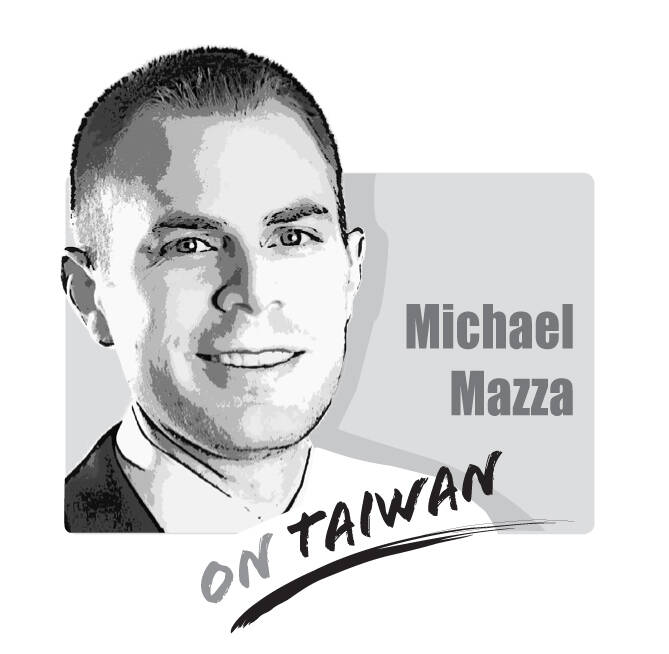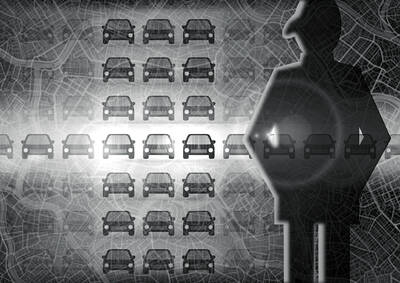It has been 35 years since up to one million protesters took to the streets in Beijing to demand political reform; 35 years since students erected the Goddess of Democracy on Tiananmen Square; and 35 years since tanks rolled into the city center, crushing the movement with extreme prejudice. Hundreds or thousands of people were killed in the crackdown, not just in Beijing but in cities across the country. Thousands more were imprisoned, tortured, or executed in the aftermath. Many fled China, ending up in Hong Kong, Europe, the United States, or Taiwan.
It is easy to look back on the Tiananmen Square Massacre and think that the bad, old days are behind us. After all, there have been protests in China in the three decades since Chinese soldiers opened fire on their unarmed fellow citizens, but the tanks have not again been called from their depots.
But although one can be glad that the Chinese Communist Party has not, since 1989, seen fit to set its war machine upon the people it purports to represent, one should also recognize that Tiananmen was not an anomaly, but rather a portent of what was to come. To be sure, China has grown prosperous over the last 35 years, many of its people enjoy a quality of life that may have been difficult to imagine in the 1980s, and it has experienced some periods of relative openness. Yet the darkness that settled over China on the night of June 3-4 never truly lifted.

When thousands of Falun Gong practitioners unexpectedly gathered outside Zhongnanhai in 1999, the Party’s response was quieter than in 1989 but no less brutal. It utterly crushed the religious movement in China, dispersing its remnants to the far corners of the earth. Those who did not escape China faced detention and torture. Ultimately, the Party found a new use for them — or, more accurately, for the organs that Party doctors forcibly harvested from their broken bodies.
In March 2008, just months before the Beijing Summer Olympics, mostly non-violent protests swept across the Tibetan plateau. Here, the story gets repetitive: the Party’s security apparatus resorted to murder, disappearances, and torture. It then redoubled efforts to suppress Tibetan culture, Tibetan Buddhism, and Tibetan language. This attempt at cultural genocide is ongoing.
Later in 2008, more than 300 prominent Chinese intellectuals, professionals, activists, and cultural luminaries released Charter ’08. The document declared that “the era of emperors and overlords is on the way out” and called for “a system of liberties, democracy, and the rule of law.” It was not long before Liu Xiaobo (劉曉波), one of the charter’s remarkably brave organizers, was detained. He had previously served time after Tiananmen and again in the late 1990s. In 2010, he would become one of just a handful of Nobel Peace Prize laureates to have earned the award while behind bars; seven years later, he would become the first laureate to die in prison.
The Party’s response to Charter ’08 marked the beginning of a much more aggressive effort to restrain civil society in China. In the years since, activists of various stripes have found themselves under the gun. Foreign non-governmental organizations now face significant operational restrictions. In 2015, hundreds of human rights lawyers and related activists were rounded up and silenced. Xi Jinping (習近平) has launched an all-out war on religious practice.
Xi’s human rights record is abominable. China has been credibly accused of carrying out a genocide in Xinjiang. Stories of forcible detention, physical and psychological torture, sexual violence, and medical experimentation shock but do not surprise. Uyghur children have been separated from their families and placed in boarding schools where they may not speak their language or practice their religion. Forced labor is rampant.
In Hong Kong, the Communist Party wiped out the city’s civil rights virtually overnight — but not before millions of Hong Kongers, for months on end, turned out to defend the freedoms they held dear. In 2021, media mogul and protest supporter Jimmy Lai (黎智英) was sentenced to 13 months in prison for “incitement to knowingly take part in an authorized assembly.” (He now stands trial again for national security and sedition offenses.)
That arrest and conviction were tragically poetic: The unlawful assembly was a vigil for the victims of Tiananmen. “If commemorating those who died because of injustice is a crime,” Lai wrote in a statement to the court, “then inflict on me that crime and let me suffer the punishment of this crime, so I may share the burden and glory of those young men and women who shed blood on June 4 to proclaim truth, justice, and goodness.”
This, perhaps, is the legacy of Tiananmen. On the night of June 3, 1989, the Chinese Communist Party declared war on the Chinese people. It has waged that ongoing war with ruthless efficiency and remorseless brutality. It has tortured, disappeared, silenced, repressed, and terrorized. But the Party has failed to snuff out the flame lit on Tiananmen Square thirty-five years ago. Across the decades and across China’s vast expanse, the hopeful have continued to tend the flame, awaiting the moment when mere embers can spark a wildfire.
Michael Mazza is a senior director at the Project 2049 Institute and a senior non-resident fellow at the Global Taiwan Institute.
Concerns that the US might abandon Taiwan are often overstated. While US President Donald Trump’s handling of Ukraine raised unease in Taiwan, it is crucial to recognize that Taiwan is not Ukraine. Under Trump, the US views Ukraine largely as a European problem, whereas the Indo-Pacific region remains its primary geopolitical focus. Taipei holds immense strategic value for Washington and is unlikely to be treated as a bargaining chip in US-China relations. Trump’s vision of “making America great again” would be directly undermined by any move to abandon Taiwan. Despite the rhetoric of “America First,” the Trump administration understands the necessity of

US President Donald Trump’s challenge to domestic American economic-political priorities, and abroad to the global balance of power, are not a threat to the security of Taiwan. Trump’s success can go far to contain the real threat — the Chinese Communist Party’s (CCP) surge to hegemony — while offering expanded defensive opportunities for Taiwan. In a stunning affirmation of the CCP policy of “forceful reunification,” an obscene euphemism for the invasion of Taiwan and the destruction of its democracy, on March 13, 2024, the People’s Liberation Army’s (PLA) used Chinese social media platforms to show the first-time linkage of three new

If you had a vision of the future where China did not dominate the global car industry, you can kiss those dreams goodbye. That is because US President Donald Trump’s promised 25 percent tariff on auto imports takes an ax to the only bits of the emerging electric vehicle (EV) supply chain that are not already dominated by Beijing. The biggest losers when the levies take effect this week would be Japan and South Korea. They account for one-third of the cars imported into the US, and as much as two-thirds of those imported from outside North America. (Mexico and Canada, while
I have heard people equate the government’s stance on resisting forced unification with China or the conditional reinstatement of the military court system with the rise of the Nazis before World War II. The comparison is absurd. There is no meaningful parallel between the government and Nazi Germany, nor does such a mindset exist within the general public in Taiwan. It is important to remember that the German public bore some responsibility for the horrors of the Holocaust. Post-World War II Germany’s transitional justice efforts were rooted in a national reckoning and introspection. Many Jews were sent to concentration camps not